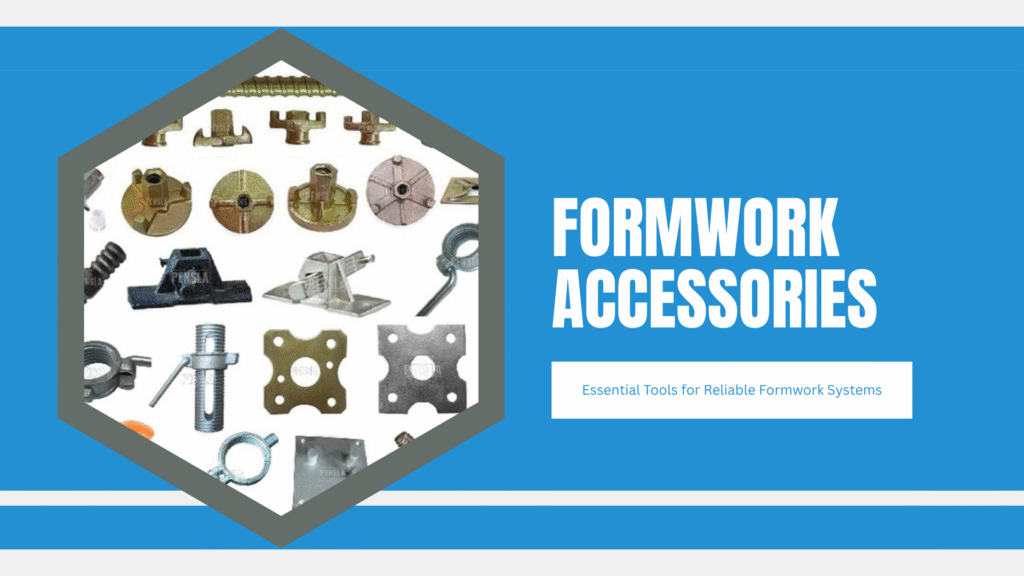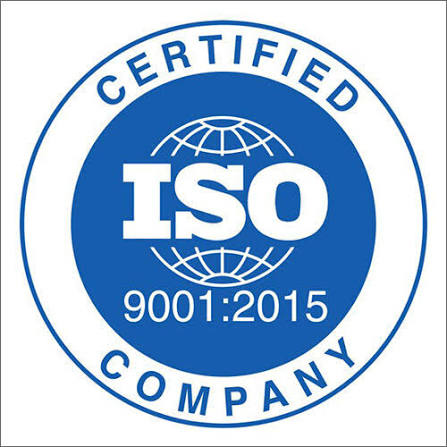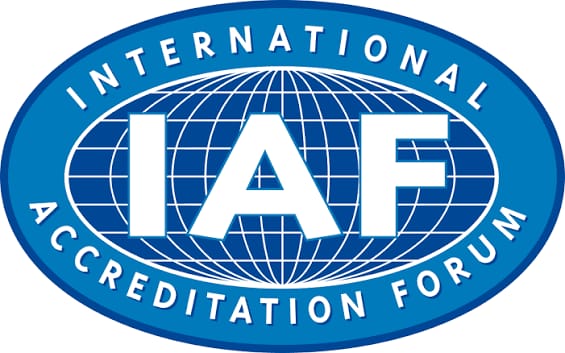In the dynamic world of Indian construction, where architectural ambition meets the relentless pressure of deadlines, success is forged in the details long before the concrete pour. The difference between a structurally sound, perfectly finished column and a costly, defective one often lies not in the concrete mix, but in the precision and quality of the formwork accessories in India that shape it.
These components are the silent guardians of structural integrity, the unsung heroes ensuring safety, efficiency, and a impeccable finish. For project managers and engineers across the country, selecting the right formwork accessories is a critical decision that directly impacts the bottom line. Let’s delve into the ten essential accessories that form the backbone of any successful concreting project.
1. Tie Rods and Wing Nuts: The Primary Containment System
Acting as the fundamental containment system, tie rods (or through-bolts) are high-tensile steel rods that pass through the formwork. Secured with robust wing nuts, they resist the immense hydrostatic pressure exerted by wet concrete, preventing blow-outs.
- Why They’re Indispensable: They are the first line of defense against formwork failure, ensuring walls and deep beams maintain their exact dimensions during the pour. The wing nuts allow for quick tightening and easy stripping.
- Ideal for: Core walls, retaining walls, and foundation walls in high-rise and infrastructure projects.
2. Waler Beams (Waler Plates): The Horizontal Strengtheners
Waler plates, more accurately known as Waler Beams, are horizontal members, typically made of steel channels or strongbacks, that are placed outside the formwork panels. They work in tandem with tie rods to distribute the concrete load evenly.
- Why They’re Indispensable: They stiffen the entire formwork assembly, reducing the risk of panel deflection and ensuring a flat, true concrete surface. They are the backbone that ties the system together.
- Ideal for: Large, uninterrupted wall pours where consistency and lack of bowing are paramount.
3. Wall Ties and Sleeves: The Complete Through-Wall Solution
Wall ties are the elements that hold the formwork faces apart at the correct distance. The accompanying sleeves (often PVC) are slipped over the tie before the concrete is poured. Once the concrete sets, the tie rod can be removed through the sleeve, leaving a clean hole.
- Why They’re Indispensable: This system allows for the reuse of tie rods, making it a highly economical and efficient choice for repetitive pours. The sleeve prevents the concrete from bonding to the tie.
- Ideal for: Large-scale residential and commercial projects with multiple identical wall cycles.
4. Column Clamps: The Guardians of Geometric Precision
Specifically engineered for vertical elements, column clamps are adjustable steel clamps that securely hold the shutters of square, rectangular, or circular columns. They apply uniform pressure from all sides.
- Why They’re Indispensable: They ensure columns are cast to exact geometric specifications without bulging or misalignment at the joints. This is critical for both structural strength and aesthetic appeal.
- Ideal for: All column construction, from the intricate designs of commercial lobbies to the standard columns of multi-story apartments.
5. Adjustable Steel Props: The Versatile Vertical Support
Also known as Acrow props or jack posts, adjustable steel props are telescopic tubes used to support horizontal formwork for beams and slabs. Their threaded mechanism allows for precise height adjustment.
- Why They’re Indispensable: They provide reliable, adaptable, and robust support for slab shoring. Their proven design ensures safety for workers and equipment operating beneath them.
- Ideal for: Virtually every Indian construction site for supporting slab formwork, from ground-level floors to towering heights.
6. Wedge Pins: The Simple, Secure Connector
A study in elegant efficiency, the wedge pin is a simple tapered steel pin used to securely connect loose brace members to the formwork system or to lock adjustable props in place.
- Why They’re Indispensable: They provide a fast, hammer-driven connection that is incredibly strong in compression and easily removable. They eliminate the need for bolts and nuts in bracing applications.
- Ideal for: Securing diagonal braces in wall formwork and locking the collar of adjustable steel props.
7. Formwork Clamps (Rapid Clamps): The Speed and Efficiency Experts
These are specialized, quick-action clamps designed for fast assembly and disassembly of formwork systems. Their lever-action mechanism allows them to be locked and released in seconds without tools.
- Why They’re Indispensable: They dramatically reduce labor time and costs associated with formwork erection and stripping, leading to faster project cycle times.
- Ideal for: Projects with tight deadlines and repetitive formwork patterns, such as mass housing and large industrial facilities.
8. Water Stoppers: The Impermeable Barrier
Water stoppers are flexible, impermeable membranes, typically made of PVC or rubber, embedded in the concrete at construction joints. They are a critical accessory for waterproofing.
- Why They’re Indispensable: They create a permanent physical barrier against the passage of water through concrete joints, protecting basements, water tanks, and underground structures from seepage and moisture damage.
- Ideal for: Foundations, basements, swimming pools, water treatment plants, and any below-grade structure.
9. Corner and Wall Brackets: The Safety and Alignment Aids
Corner brackets are L-shaped accessories used to secure and align formwork panels at 90-degree angles. Wall brackets are supports attached to the formwork to provide a safe working platform for laborers.
- Why They’re Indispensable: Corner brackets ensure perfect right-angles in corners, while wall brackets enhance worker safety during rebar fixing, concreting, and deshuttering operations.
- Ideal for: Ensuring precise corners in all structures and providing safe access on high-wall formwork.
10. Anchor Nuts: The Future Connection Point
Also known as cast-in inserts or anchor sockets, anchor nuts are threaded components cast directly into the concrete. They provide a secure, strong point for future attachments.
- Why They’re Indispensable: They allow for the easy and secure installation of secondary steel, façade elements, machinery, and handrails after the concrete has cured, without the need for risky and less reliable post-drilling.
- Ideal for: Fixing structural steel beams, precast panels, MEP supports, and heavy machinery to concrete surfaces.
Conclusion: Build with Precision, Build with Trust
In the competitive landscape of Indian construction, the quality of your formwork accessories in India is a direct reflection of your commitment to excellence. These ten components are not mere consumables; they are a strategic investment that safeguards your project against delays, cost overruns, and structural compromises.
Choosing a supplier that provides high-tensile, durable, and precisely engineered formwork accessories is the first step toward delivering projects that are not only structurally superior but also profitable.
Don’t let a weak accessory compromise your strongest designs. Partner with a name that stands for reliability and precision. Explore our comprehensive range of certified formwork accessories in India, engineered to meet the toughest demands on the subcontinent.
Contact our technical team today for a consultation and let us help you build a legacy of flawless concrete.




